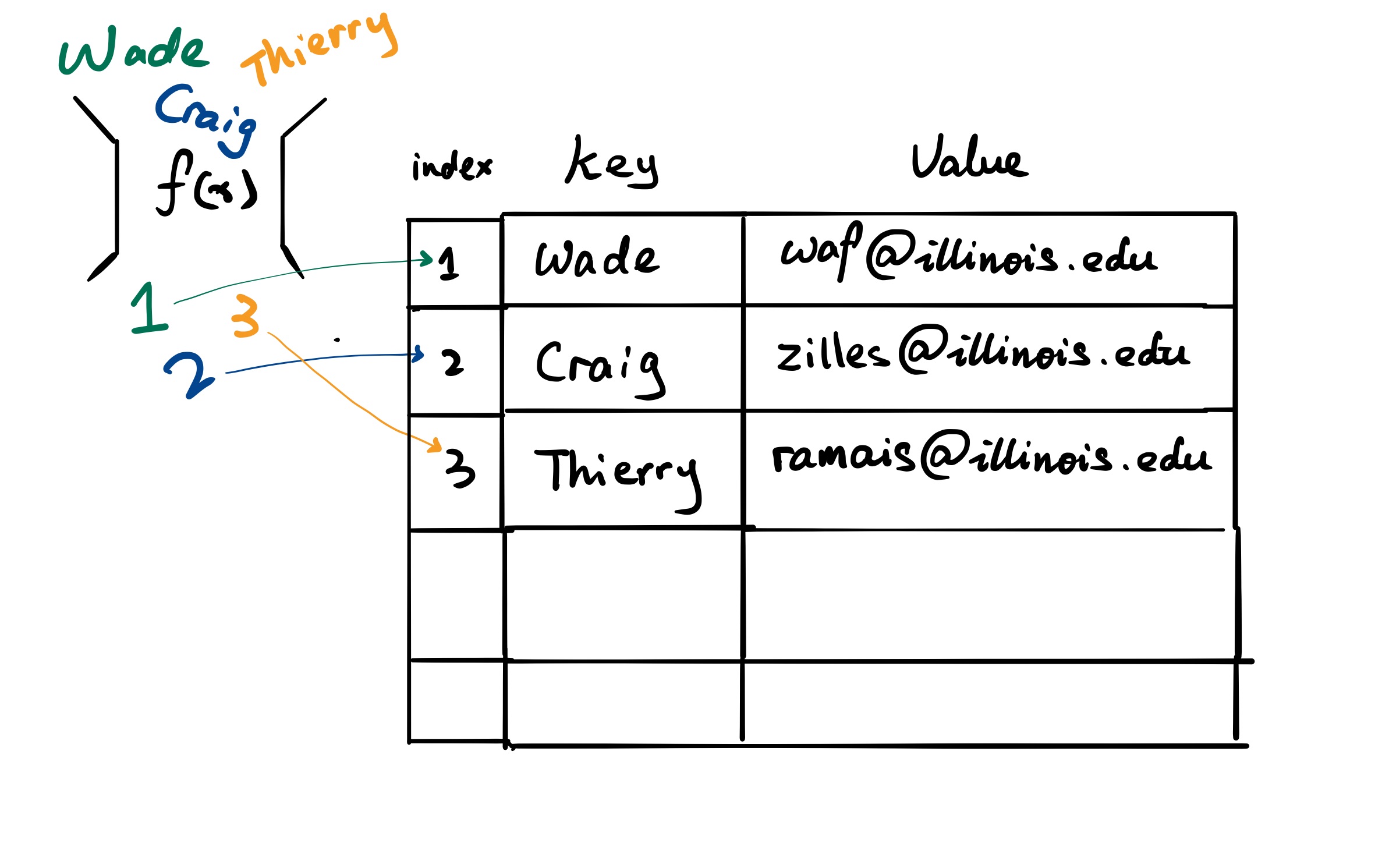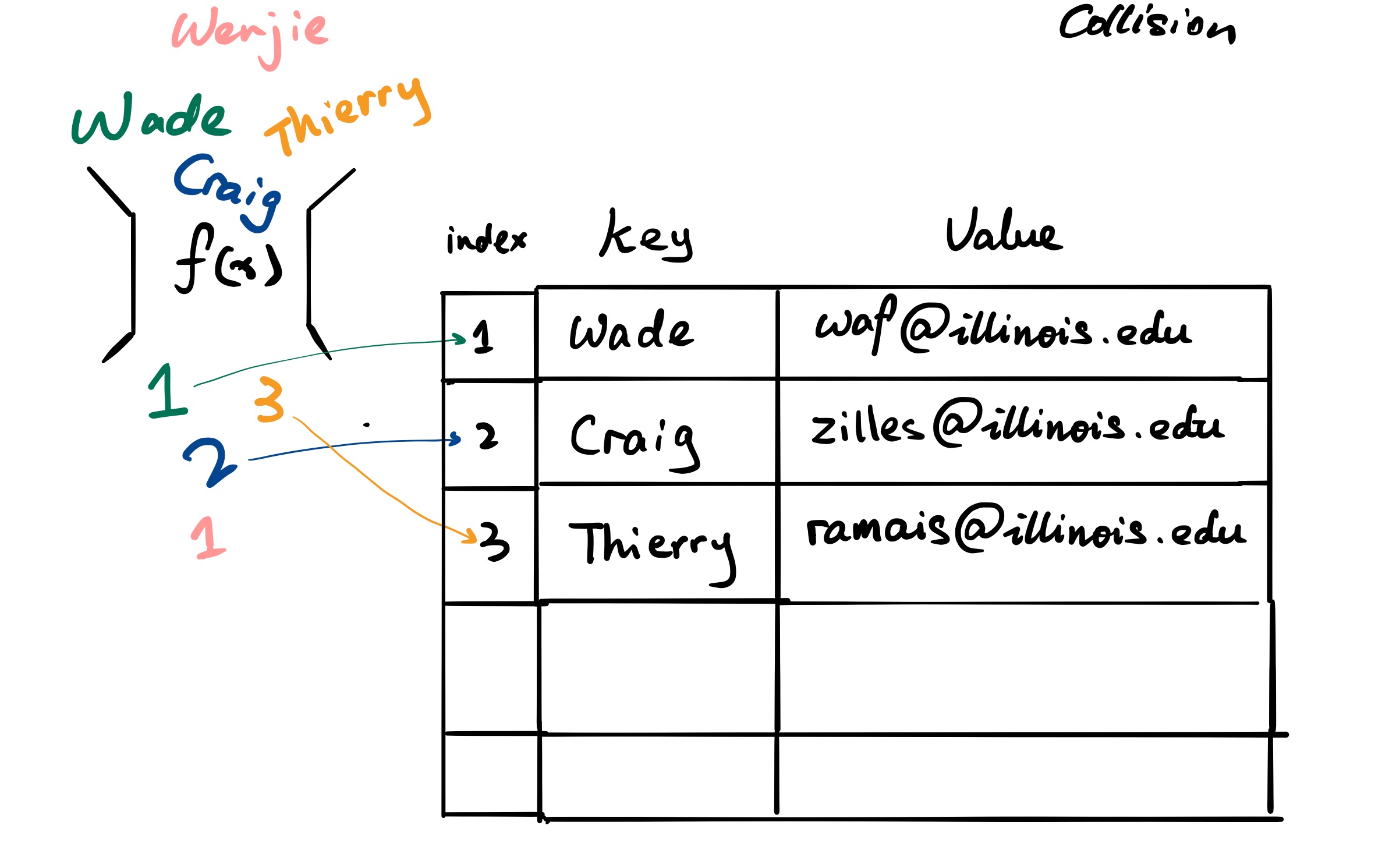Hash Table
by Siping MengIntroduction
Hashing has many uses. In 225, we talk about how hashing is used to store data. To perform hashing, we need two things
- Hash function: Converts a key into a smaller number and uses that number as an index in the table.
- Hash table: An array that stores values according to the index.

Hash Collisions
Assume the previous works like the following:
- if the input start with w, return 1
- if the input start with c, return 2
- if the input start with t, return 3
Now we want to insert a TA to our contact table, say key : Wenjie and value : wzhu26@illinois.edu. The hash function will return 1.

Two types of hash storing
Separate Chaining
What we can do is to let the cells of our hash table point to several linked lists of values which have the same output from hash function.

Linear Probing
Something else we can do is just fill the table, without creating any additional memory.
When we see a collision, we will try to linearly probe for next space. In our case, we should start to check slot 1, but oh waf is there, so let’s probe to slot 2. However, professor Craig has already taken that space so we need to probe again to slot 3 and found lovely Thierry there. Luckily, slot #4 is empty so we can put our TA’s info there.
When searching for an element, we examine table slots one by one until the desired element is found , or it is clear that the element does not exist in the table.
